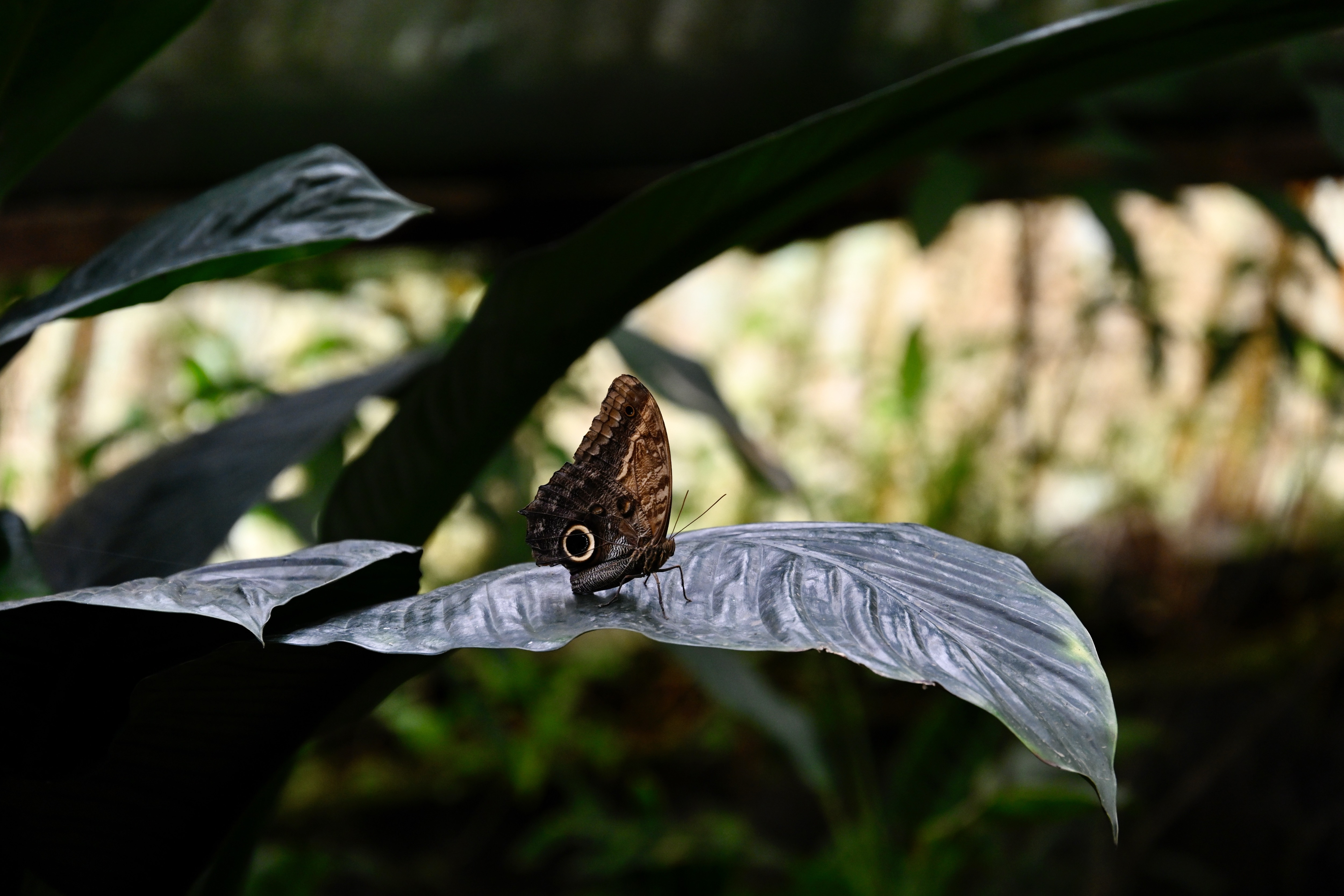Introduction to Caligo memnon
Overview of the Owl Butterfly
The Caligo memnon, enchantingly known as the Owl Butterfly, is not just a spectacle of nature but also a vital component of Costa Rica’s ecological tapestry. With a wingspan ranging from 13 to 16 centimeters, these butterflies are among the larger species found in tropical climates, particularly thriving in the lush landscapes of Monteverde.
Significance in Monteverde
Monteverde serves as a prime habitat for the Owl Butterfly, fostering a diverse environment that supports their lifecycle and contributes to the ecological balance of the area. The region's dense forests offer ample food sources and shelter, crucial for the survival of these butterflies.
Adaptations and Features
Adaptively, the Owl Butterfly exhibits large eyespots on its wings, which mimic the eyes of predators like owls. This feature is a defensive adaptation that confuses or deters would-be predators, ensuring their survival in the wild. Their nocturnal habits help them avoid daytime predators and play a unique role in the night-time pollination of certain plant species.
A Closer Look at the Owl Butterfly
The Owl's Eyespots: Nature's Masterpiece
- Functionality of Eyespots: These remarkable eyespots are essential for survival, creating an illusion that scares off predators like small birds and lizards. Studies have shown that these patterns can significantly reduce the number of attacks on butterflies, particularly from young, inexperienced predators.
- Evolutionary Significance: The evolution of eyespots is a fascinating study in natural selection, offering insights into adaptive strategies that have enabled the Owl Butterfly to thrive.
- Interaction with Other Species: These butterflies interact with a range of species, from the plants they pollinate to the predators they evade, showcasing a complex web of ecological relationships.
- Research and Studies: Research conducted in regions like Monteverde helps illuminate how these butterflies impact their environment, contributing valuable data towards broader ecological studies.
Habitat and Behavior
Life in Aventura Park
Aventura Park replicates the natural environment of the Owl Butterfly, providing a sanctuary that supports their population while offering visitors a glimpse into their world.
Dietary Preferences
Primarily, these butterflies feed on the juices of rotting fruits, which not only provide them with vital nutrients but also with energy necessary for their daily activities and reproductive processes.
Role in the Ecosystem
As pollinators, Owl Butterflies play a crucial role in the reproductive cycles of many tropical plants, which in turn maintains the region's dense and diverse flora.
Behavioral Patterns
Their activity peaks during dusk and dawn, with their unique flying patterns and feeding habits contributing to their mystical persona.
Aventura Park: A Sanctuary for Lepidoptera
Conservation Efforts for Butterfly Species
- Protection Programs: The park's targeted conservation programs are designed to protect species like the Owl Butterfly, ensuring their habitat remains intact and free from invasive species.
- Breeding and Rehabilitation: Captive breeding programs help bolster population numbers, ensuring genetic diversity and the long-term survival of the species.
- Collaborations and Partnerships: Partnerships with local universities and global conservation organizations enhance the effectiveness of these programs.
- Success Stories: Successes include increased numbers of the Owl Butterfly within the park, demonstrating the effectiveness of conservation strategies.
The Educational Role of Aventura Park
- Educational Programs: The park offers programs that educate visitors about the lifecycle and conservation of butterflies, enhancing public understanding and support.
- Visitor Engagement: Interactive exhibits and guided tours engage visitors, fostering a deeper appreciation and commitment to butterfly conservation.
- Awareness Campaigns: Awareness campaigns reach beyond the park, influencing broader public attitudes towards environmental conservation.
- Impact on Local Communities: The educational efforts also benefit local communities by fostering eco-friendly practices and increasing tourism-related income.
The Mystique of Monteverde
Biodiversity in Monteverde
- Unique Ecosystems: The unique ecosystems of Monteverde support a rich variety of life forms, each playing a role in maintaining ecological balance.
- Species Richness: Besides the Owl Butterfly, Monteverde is home to countless other species, each contributing uniquely to the region’s biodiversity.
- Conservation Challenges: Despite its richness, Monteverde faces challenges such as climate change and habitat loss, which threaten its biodiversity.
- Scientific Research: Ongoing research efforts aim to understand and mitigate these challenges, providing crucial insights into effective conservation strategies.
Ecotourism in Costa Rica: A Model for the World
- Sustainable Practices: Monteverde's approach to ecotourism focuses on sustainability, ensuring that tourism has a minimal environmental impact while benefiting the local economy.
- Global Influence: Costa Rica's ecotourism model is regarded globally as a leading example of how tourism can coexist with conservation.
- Economic Benefits: Ecotourism significantly contributes to the national and local economies through job creation and tourism revenues.
- Future Prospects: Looking forward, the region is exploring ways to expand its ecotourism offerings while ensuring the preservation of its unique ecological heritage.
Conclusion: The Butterfly Effect
The presence of the Owl Butterfly in Aventura Park symbolizes the profound impact of targeted conservation efforts. Each small step in conserving a species like Caligo memnon can lead to substantial ecological benefits, illustrating the "butterfly effect" where minor changes can have far-reaching consequences. This narrative not only underscores the importance of individual and collective action in conservation but also invites readers to engage actively in preserving our natural world.

